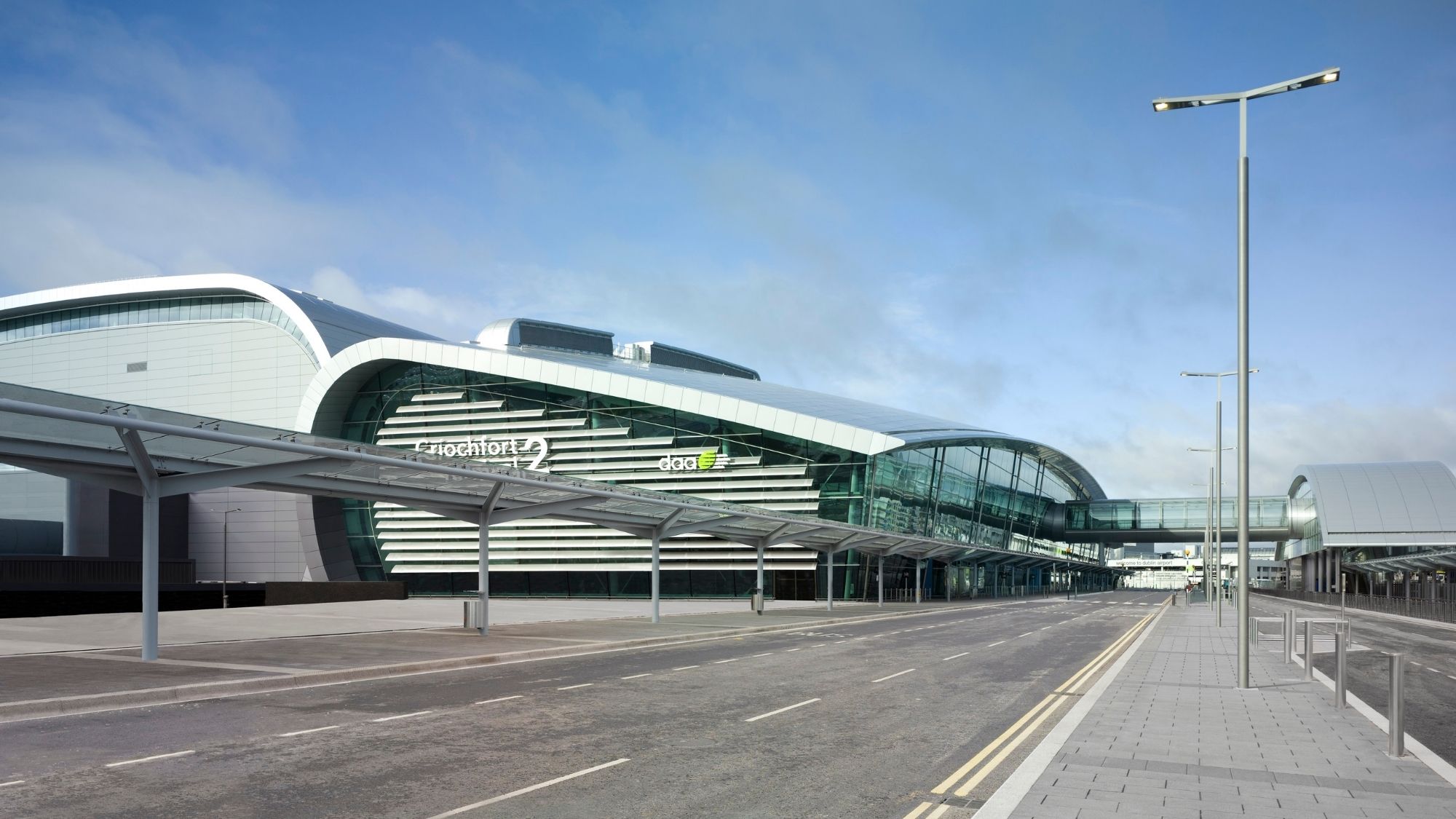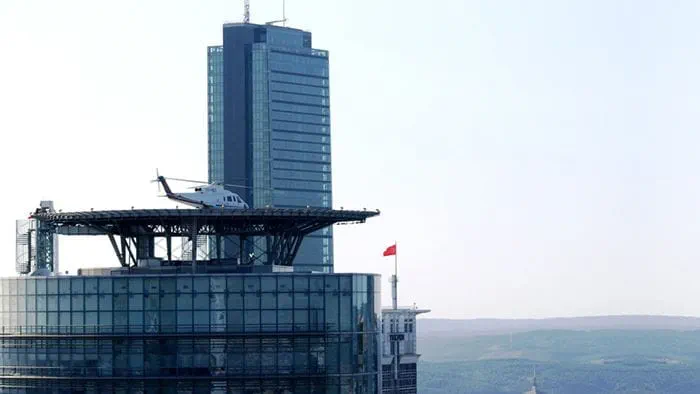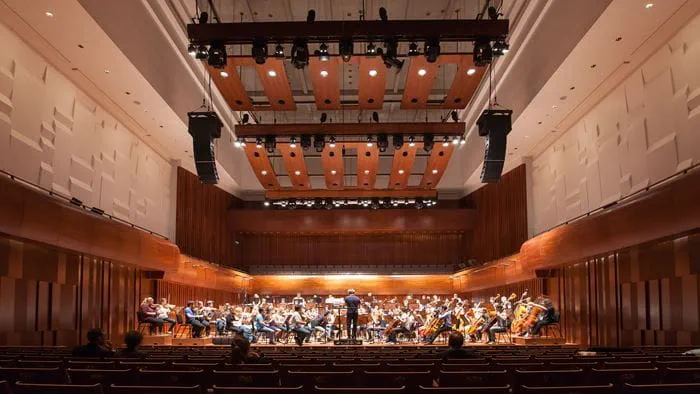Opened in 2010, as a critical element in Ireland’s national transport infrastructure, Dublin Airport’s Terminal 2 (T2) was designed to improve the passenger experience, helping to boost the airport’s connectivity. Our team adopted a user-centred approach for the airport terminal, designed to be flexible and to meet passengers’ changing needs. With a processing capacity of up to 15 million passengers per year, the terminal also incorporates a full US Customs and Border pre-clearance facility, greatly enhancing the experience of westbound passengers out of Dublin.
Easy to navigate, the project included the design of a 75,000m2 terminal building, incorporating passenger and baggage processing, security screening, over 9,000m2 of retail outlets and a new 25,000m2 pier.
As lead consultants on Dublin Airport’s T2, Arup led a team on behalf of Dublin Airport Authority (daa), incorporating architects Pascall+Watson and construction managers Mace Group to deliver the terminal within a tight 34-month programme.
Our designers provided civil, structural, mechanical, electrical, façade, fire and public health engineering; and a range of specialist consulting services including transport and airport planning, environmental and local planning, baggage and logistics advisory, acoustics and security consulting, bringing the project from concept to completion.
Project Summary
75,000m² terminal building
25,000m²pier
15millionpassengers annually
Aviation advisory from planning to operations
Arup’s expertise in aviation analysis and planning was integral to plan the location and layout of the new terminal building, adjacent to the existing terminal. Transport planning was key, as the new and existing terminals have separate approach roads. Centring the road and infrastructure systems around the needs of users, Arup designed and managed the upgrade, widening and reorganisation of circa 7km of existing campus roads network, including dual carriageways, distributor roads and local roads, ensuring the access routes were positioned where they’re most useful for passengers.
A covered pedestrian walkway between the two terminals was also designed, in addition to a forecourt area to cater for public transport facilities. Arup’s transport planners were also responsible for installing and commissioning new traffic signals and the ITS equipment and infrastructure.
The new terminal was built on either side of the existing terminal’s approach road, with a 45m-wide bridge linking the check-in facilities on one side to the arrivals and departures hall on the other. Photo credit: Hans-Christoph Brinkschmidt.
A new approach road was created for the existing terminal to take traffic away from T2’s forecourt, improving the arrivals experience and avoiding costly temporary road diversions during construction. The new approach road bisects the new terminal building, but the check-in facilities on one side are linked to the arrivals and departures hall on the other with a 45m-wide bridge.
Our planning advisors guided the project, assisting daa with early stakeholder consultation and adapting the design in line with feedback. Our environmental consultants prepared the Environmental Impact Statement and led the public oral hearing process.
Arup also led the project management and construction management, including managing quality, health and safety, commissioning and handover, resulting in the project being completed on time and within budget with zero interruptions to ongoing operations at the existing terminal.
Passenger-centred design, award-winning terminal
T2 formed the centrepiece of a five-year transformation programme at Dublin Airport to upgrade and modernise facilities, increasing capacity and enhancing the passenger experience. With almost all of Ireland’s long-haul carriers operating out of T2, the terminal has been vital to securing new routes and establishing the airport as the key gateway to the island. The terminal boasts a new pier, serving a total of 19 aircraft parking stands.
The full US pre-clearance facility is a major bonus for US-bound travellers. By passing through passport control, customs and excise prior to departing, they are treated as domestic passengers on their arrival, improving convenience and ease of use.
Aligned with international best practice, Dublin’s T2 is designed as a flexible, expandable and contemporary facility. The terminal was recognised at the 2010 Structural Steel Design Awards, awarded the 2010 Public Building of the Year at the CMG Building & Design Awards and received the 2014 Association of Consulting Engineers of Ireland (ACEI) President’s Award. The new terminal also contributed to Dublin Airport winning Medium Airport of the Year at the 2017 CAPA’s Aviation Awards for Excellence.
Optimising airport accessibility
Striving to make the passenger experience as seamless as possible, Arup developed new road, car park and terminal signage at landside and airside, as well as optimising the acoustic design.
Emphasising accessibility and inclusivity, Arup’s aviation experts developed and tested wayfinding journeys for all users, from multi-modal transport links, to departures and arrivals including transfers areas. The wayfinding design for the entire airport was informed by a series of workshops, including consultation with the National Council for the Blind Ireland. Users are provided with the right information, at the correct time, in a format that is accessible to all passengers.
Advising on the acoustic design to create a pleasant passenger experience, including building envelope and internal partition sound insulation and assessment of vibration from baggage handling equipment, Arup’s acoustic experts achieved control of reverberation in public spaces through the application of stretched fabrics and perforated metal soffits.
Optimising accessibility, Arup’s experts advised on wayfinding, acoustics and lighting to create a pleasant passenger experience. Photo credit: Hans-Christoph Brinkschmidt.
The expansive nature and acoustic coupling of the main spaces posed a challenge for avoiding spill between loudspeaker zones. A combination of high-powered overhead loudspeakers, long throw phased array, and lower-power distributed loudspeaker systems overcame these challenges.
An energy-efficient airport terminal
Reducing the energy requirements and energy consumption were key objectives for Arup’s engineering teams: the terminal includes a new energy centre with combined heat and power. High performance cladding systems, in combination with intelligent building control systems, reduce energy consumption. All materials recommended in our designs were carefully selected based on overall environmental impact, functionality, durability and whole lifecycle costs.
Energy-efficient light sources were used to lower energy consumption and increase lamp replacement intervals and servicing, resulting in reduced maintenance costs. A Dali protocol was used to link daylight and electric lighting, minimising energy wastage, and luminaires were designed to be dimmed or switched to suit operational conditions.
Maximising natural light and providing a calm atmosphere for passengers, the lighting scheme reinforces the sense of direction through the building and guides passengers through the airport. Daylight enters from the glazed façades and roof skylights along the spine of the building. Solar shading was designed to minimise heat gains yet permit sunlight penetration in selective areas, ensuring optimal comfort for passengers.
The lighting scheme contributed to an overall 17% reduction of CO2 (compared to a code compliant design).
“ Leading T2’s design was an honour for the aviation team at Arup. Balancing existing trends and international industry standards for airport and passenger terminal design with the need for flexibility, the new terminal building is capable of adapting over time to the ever-changing requirements of the aviation industry. ”Talk to Conor Hoey about the design of Dublin Airport’s T2Conor Hoey Europe Aviation Business Leader
 ;
;







